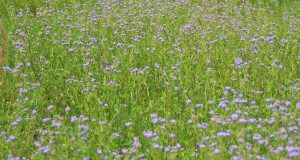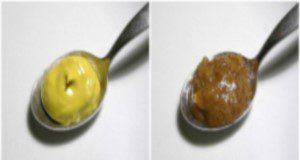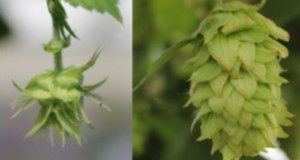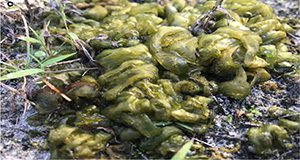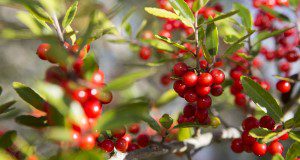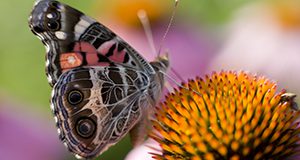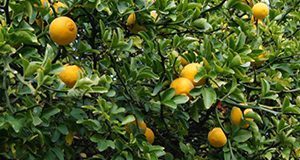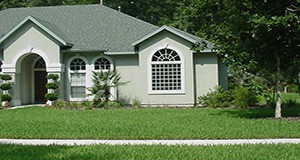The purpose of this report is to summarize ornamental plant producers' perceptions about neonicotinoid labeling and anticipated changes in production practices due to neonicotinoids labeling policy intervention. The target audience is industry, state agency, and public stakeholders involved in decisions and policy making related to the use of neonicotinoid insecticides in the U.S. ornamental plants industry.
https://edis.ifas.ufl.edu/fe1094
Tag: Mid-Florida Research and Education Center
Biology and Management of Praxelis (Praxelis clematidea) in Ornamental Crop Production
Praxelis is a newly emerging weed species in Florida, one that Plant Protection and Quarantine (PPQ) is considering adding to the federal noxious weed list. The plant can be easily misidentified and confused with Ageratum houstonianum (bluemink) and Conoclinium coelestinum (blue mistflower) as well as several other species that have similar flower characteristics. This new 5-page article is written for green industry professionals and others to aid in the identification and management of praxelis in and around ornamental plants. Written by Yuvraj Khamare, Chris Marble, Shawn Steed, and Nathan Boyd, and published by the UF/IFAS Environmental Horticulture Department.
https://edis.ifas.ufl.edu/ep585
Small-to-Medium-Scale Sensory Evaluation of Horticultural Crops: Sensory Attributes
Given the economic impact associated with the value and acceptability of horticultural crops, sensory evaluation is commonly employed in research, product development, and quality control, with very specific parameters outlined for its proper execution. The resulting data can be used to make sound decisions about crop quality and marketability, ultimately determining the overall value. This new 3-page publication of the UF/IFAS Environmental Horticulture Department is the first in a series designed to assist producers in the small-to-medium-scale sensory evaluation of their horticultural crops, outlining sensory attributes essential to sensory evaluation, including appearance, aroma, texture, and flavor. Written by Sean Michael Campbell and Charles A. Sims.
https://edis.ifas.ufl.edu/ep579
Harvest Techniques for Hops (Humulus lupulus)
Hops (Humulus lupulus) are perennial plants commonly harvested for their mature strobiles, also referred to as cones, which are primarily dried and used as a bittering agent and preservative in beer production. The two primary factors of harvest timing and harvest method can have large impacts on the quality and economics of the finished product. The decision of when and how to harvest is important and should rely upon growing-region-specific environmental conditions, physical observations of the cones, and the wants and needs of the individual producer. This new 4-page publication of the UF/IFAS Environmental Horticulture Department describes the primary methods used in hop harvesting, including field, indoor, and machine harvesting. Written by Sean Michael Campbell and Brian J. Pearson.
https://edis.ifas.ufl.edu/ep578
Biology and Management of Nostoc (Cyanobacteria) in Nurseries and Greenhouses
This new 4-page document provides an overview of the biology and ecology of Nostoc-like cyanobacteria (blue-green algae) in humid soils and discusses cultural, physical, and chemical methods to manage this weed in nursery environments. Written by H. Dail Laughinghouse IV, David E. Berthold, Chris Marble, and Debalina Saha, and published by the UF/IFAS Agronomy Department, February 2019.
http://edis.ifas.ufl.edu/ag430
Key Plant, Key Pests: Holly (Ilex sp.)
This series of Key Plant, Key Pests publications are designed for Florida gardeners, horticulturalists, and landscape professionals to help identify common pests associated with common Florida flora. This publication, the eighth in the Key Plant, Key Pests series, helps identify the most common pests found on Holly (Ilex sp.). This publication provides information and general management recommendations for Florida wax scale, tea scale, Cylindrocladium leaf spot, dieback, Sphaeropsis gall, root knot nematodes, and magnesium deficiency. This five-page document was written by Juanita Popenoe, Caroline R. Warwick, Jacqueline Bourdon, and Liz Felter and published by the UF/IFAS Department of Environmental Horticulture.
http://edis.ifas.ufl.edu/ep566
Process of Drying Post-Harvest Hops (Humulus lupulus) for Small-Scale Producers Using a Novel Drying Rig
Fresh horticultural goods often require drying post-harvest to preserve quality and allow for successful long-term storage of plant material. Given the influx of hops cultivation in the state of Florida, this 5-page publication will help Florida hops growers and hobby brewers to understand how to efficiently dry hops prior to storage. Written by Sean Campbell and Brian Pearson and published by the UF/IFAS Environmental Horticulture Department, January 2019.
http://edis.ifas.ufl.edu/ep568
Are Consumers Interested in Ornamental Plants That Benefit Pollinator Insects?
Population declines among bees, butterflies, and other pollinator insects are very worrying because 70% of the world’s food crop production depends upon these tiny insect workers. Fortunately, ninety million US households have yards, landscapes, or gardens that can enhance pollinator habitat and health. Consumers’ actions can drastically impact pollinator insects and even help them to recover. This 5-page fact sheet written by Hayk Khachatryan and Alicia Rihn and published by the UF Department of Food and Resource Economics, October 2016, describes a new UF/IFAS study of consumers’ actions and perceptions as they considered ornamental plants that benefit pollinators. It covers consumers’ current actions to aid pollinators, their interest in purchasing plants to help pollinators, and their perceptions about plant availability, and it describes strategies for merchants and producers to cater to consumer preferences for in-store communications/promotions and help them to find and purchase plants that aid pollinator insects.
http://edis.ifas.ufl.edu/fe997
Profitability of Citrus Tree Greenhouse Production Systems in Florida
Nurseries are a vital part of the citrus industry in Florida, providing growers with trees for replanting and expanding citrus groves. As part of the response to citrus greening and canker disease in the industry, nursery-aimed regulations were set in place to try to guarantee the production of trees “free of virus or other graft transmittable diseases” in plant nurseries. The new regulations resulted in an important shift for producers from traditional open field groves to greenhouses. This 4-page fact sheet describes an experiment performed at the UF/IFAS Mid-Florida REC in Apopka to test the profitability of different inputs in citrus-producing greenhouse nurseries and provides recommendations that will be useful for the whole citrus-tree-producing sector. Written by Hayk Khachatryan and Alicia Rihn and published by the Food and Resource Economics Department.
http://edis.ifas.ufl.edu/fe999
Consumers' Response to "Neonic-Free" and Other Insect Pollinator Promotions on Ornamental Plants
Pollinator insects are essential to world food crop production, the economy, and the environment. Neonicotinoid (neonic) insecticides are facing intense backlash from environmental groups because the systemic protection they provide throughout the plant, including the pollen and nectar, may be injuring pollinator insects and causing their population decline. But many nursery and greenhouse growers use neonic-based pesticide control measures because they are effective, inexpensive, and cause less environmental damage than other insecticides. The increased publicity may influence consumer demand and preferences but very few studies have investigated consumer responses to neonic-free labels, and evidence suggests that many consumers have little knowledge or awareness of the issue. This 3-page fact sheet describes the results of a the study investigating how consumers’ awareness of neonic insecticides influenced their preferences and purchasing behavior for plants and exploring the marketing potential of using alternate pollinator promotions (besides neonic-free) in garden center retail outlets. Written by Hayk Khachatryan and published by the Food and Resource Economics Department.
http://edis.ifas.ufl.edu/fe991
Consumer Perceptions of Lawn Fertilizer Brands
Widespread urbanization in the United States has increased the number of lawns. A healthy lawn provides many benefits, including urban heat dissipation, water quality protection, erosion control, carbon sequestration, community safety, aesthetics, and property value growth. Many homeowners maintain their healthy lawns by applying fertilizers throughout the growing season, but excess fertilizer runoff and leaching have received much attention recently because of waterway pollution and algae blooms, leading many states to place restrictions on what chemicals can be used in lawn fertilizers.
Consumers’ increased environmental awareness creates a niche opportunity for the fertilizer industry to promote environmentally friendly lawn fertilizers, but in order to effectively exploit it, industry stakeholders must understand consumer purchasing behavior before expending labor, time, and money creating products for sale. The following 3-page report written by Hayk Khachatryan, Alicia Rihn, and Michael Dukes and published by the Food and Resource Economics Department covers research methodology and the existing brand awareness and selection of consumers in the lawn fertilizer industry. It also discusses homeowners’ preferences for certain fertilizer attributes. Consumer awareness, selection, and attribute preferences indicate existing behavior, and understanding existing behavior assists in the development of effective marketing programs, promotional strategies, and policies.
http://edis.ifas.ufl.edu/fe990
Florida Consumer Preferences for Fruit-Producing Plant Attributes
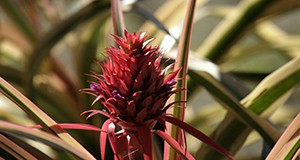
This 4-page report from the Food and Resource Economics Department and the UF/IFAS Mid-Florida Research and Education Center compares the effects of plant type, price, production method, and origin attributes on consumer preferences for fruit-producing plants. Authors Hayk Khachatryan and Alicia Rihn present the results of a survey of Florida plant consumers conducted in June and July of 2014 to rate their likelihood of purchasing plants with various attributes, reporting that production methods do indeed directly influence consumers’ preferences for fruit-producing plants. The article describes the implications for the environmental horticulture industry and provides suggestions for growers and retailers to more effectively market their plants.
http://edis.ifas.ufl.edu/fe981
